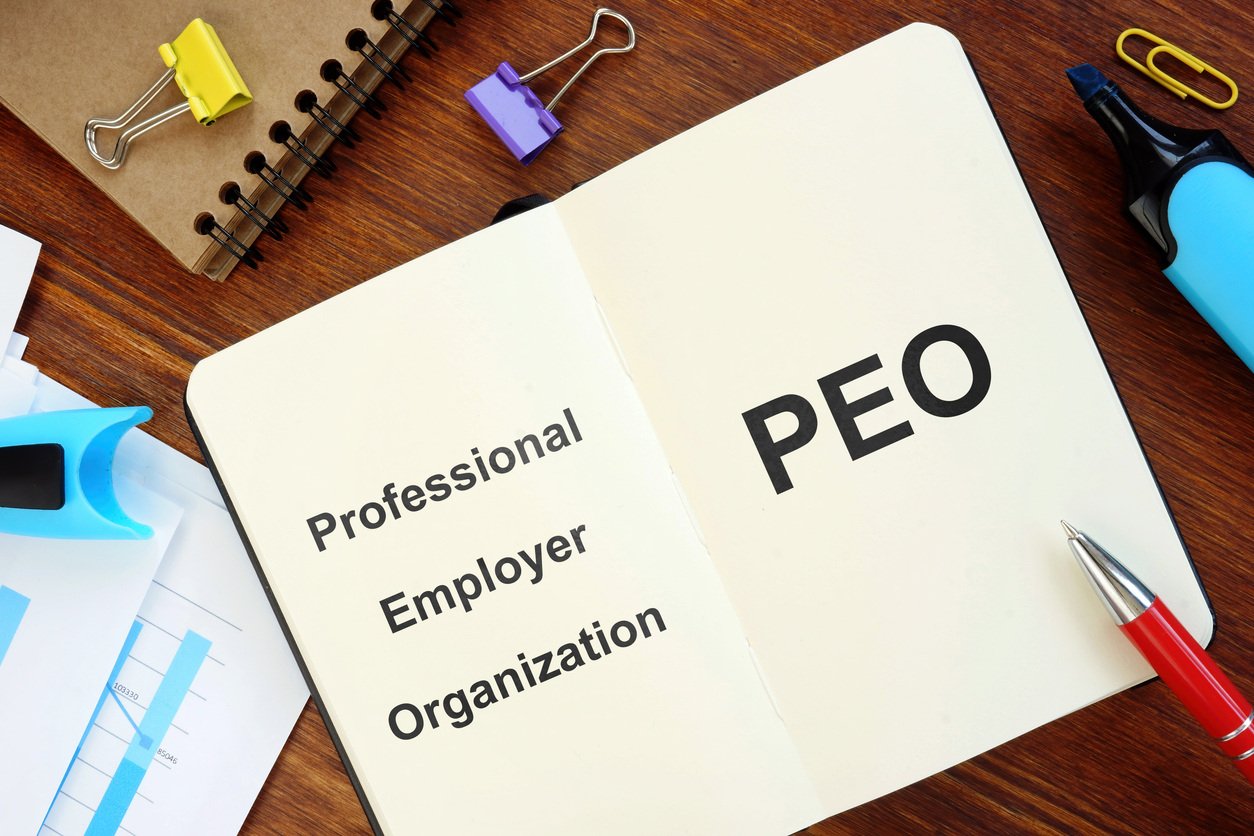
Written by
Mary Chauvin
Mary is a benefits specialist on the marketing team at BerniePortal. She writes about benefits, strategy, and healthcare trends to help you grow and protect your book of business.
What to Know About PEOs

We all know the big legacy payroll companies. There’s ADP, Paychex, Gusto, and so many more. These aren’t just payroll companies; they are also what is known as a PEO.
What Is a PEO?
A Professional Employer Organization or “PEO” is a comprehensive human resources outsourcing solution that provides businesses with a wide range of HR services. These services include things like payroll processing, employee benefits administration, compliance assistance, risk management, and more. Essentially, a PEO becomes a co-employer with its client, sharing employer responsibilities and liabilities.
Working with a PEO is a way to outsource HR functions so the company can focus on the tasks that are really important to their growth and success. By doing so, businesses gain access to a team of HR professionals and technology platforms that aid in HR functions.
PEOs offer an attractive proposition to many small and medium-sized businesses because they promise to handle everything from payroll and HR to benefits administration, allowing employers to focus on their core business.
How does this affect you as a broker? If an employer agrees to work with a PEO, they sign a Broker of Record, making PEOs a big competitor to you. So, how can you compete with these all-in-one solutions and demonstrate a unique value proposition? This blog will provide strategies to stand out against PEOs.
Pros and Cons of PEOs
This all sounds like a great deal, right? Let’s break down why this might not be the best option for HR, and how you can leverage the downsides of PEOs to your benefit. First, what are the pros and cons of PEOs for HR?
Pros:
- Access to Comprehensive Benefits: PEOs often offer access to a wide range of employee benefits, including health insurance, retirement plans, and other perks. This allows small and medium-sized businesses to provide competitive benefits packages to attract and retain top talent.
- HR Expertise: PEOs employ HR professionals who specialize in various areas such as compliance, payroll processing, and employee relations. By outsourcing HR functions to a PEO, businesses can tap into this expertise without the need to maintain an in-house HR department.
- Reduces Liability Risks: PEOs assume certain employer liabilities and responsibilities, such as compliance with employment laws and regulations. This can help businesses mitigate risks and avoid costly legal disputes or penalties.
- Administrative Efficiency: PEOs handle time-consuming administrative tasks such as payroll processing, benefits administration, and compliance management. This frees up time and resources for businesses to focus on core operations and strategic initiatives.
Cons:
- Limited Control: When partnering with a PEO, businesses relinquish some control over HR functions and decision-making. This may not be ideal for businesses that prefer to have direct oversight and control over their HR operations.
- Limited Customization: PEOs typically offer standardized HR solutions that may not be fully customizable to meet the unique needs of every business. This can be a drawback for businesses with specialized requirements or preferences.
- Communication Challenges: With a third-party managing HR functions, there is a risk of miscommunication or misunderstandings between the PEO, the business, and its employees. Clear communication and transparency are crucial to mitigate this risk.
- Dependency on PEO's Financial Stability: Businesses rely on PEOs to manage critical HR functions and benefits administration. If the PEO experiences financial difficulties or goes out of business, it could disrupt operations and create challenges for businesses and their employees.
- Complexities in Transition: Transitioning to a PEO involves a significant change in HR processes and systems. Businesses may encounter challenges during the transition period, including data migration, training, and adjustment to new workflows. This could cause a lot of confusion and frustration, which could disrupt overall morale.
Ultimately, whether partnering with a PEO is beneficial for a business depends on its specific needs, priorities, and circumstances. Conducting thorough research, evaluating alternatives, and weighing the pros and cons can help businesses make informed decisions about whether to engage with a PEO.
How can you sell AGAINST a PEO?
To learn how to sell against a PEO, it’s important first to know how they sell themselves. Many well-known PEOs market themselves as an “all-in-one solution” that provides all-in-one HR functions. Check out companies like Insperity, Trinet, Rippling, ADP, Paychex—they all market themselves as all-in-one. It all starts with understanding the needs and pain points of your clients.
While PEOs offer convenience and efficiency, they often lack the personalized service and expertise that a broker can provide. By conducting a thorough needs analysis and demonstrating your deep understanding of your clients' businesses, you can showcase the tailored solutions and strategic guidance that set you apart from PEOs.
As a broker, you can set yourself apart by establishing a personal relationship with clients. A great way to do this is by sending educational resources, inviting clients to conferences, and checking in with them not just during open enrollment, but also throughout the year. Checking in on clients to see how things are going and what you can help with can go a long way. One big problem with PEOs is it is very “one-size-fits-all,” so one thing you are able to leverage is the fact that you can offer something more customizable and show you are able to offer a better experience. You can build a benefits package around a client’s unique needs, while a PEO isn’t able to be as flexible.
Many employers are drawn to PEOs because they promise simplicity and ease of use. However, they may not fully understand the trade-offs involved, such as limited plan options, lack of flexibility, and potential compliance risks. As a benefits broker, it's important to educate clients about these considerations and help them make informed decisions that align with their long-term goals and values.
Another key thing to keep in mind when selling against a PEO is to leverage the cons that were mentioned above. The transition to a PEO is complicated, but companies may only be looking at the upsides to working with a PEO. Being able to prove the client will be able to have more control and customizations as well as better communication within their organization by not working with a PEO, there is more of a change of reconsideration.
Building strong relationships and trust is essential in any sales process, but it's especially critical when selling against a PEO. Employers need to feel confident that their benefits broker truly has their best interests at heart and is committed to delivering value beyond just a transactional relationship. By investing time in getting to know our clients, understanding their unique challenges, and offering proactive support and guidance, we can position ourselves as trusted advisors and invaluable partners in their success.
Selling against a PEO may seem daunting, but with the right approach and mindset, benefits brokers can rise to the challenge and emerge victorious.
Additional Resources:
- Brokers’ Corner Podcast—watch and subscribe to the Brokers’ Corner podcast, which dives into the topics that affect your agency and industry and identifies strategies so you can protect and grow your book of business
- BerniePortal Brokers’ Council—a council of benefits brokers from across the country that advises BerniePortal on industry concerns, trends, and the ways technology can best support their agency and employer groups
- BerniePortal for Brokers—leveraging technology to increase your agency valuation and support your employer groups is easier than ever with BerniePortal’s software solution, built for brokers by brokers

Written by
Mary Chauvin
Mary is a benefits specialist on the marketing team at BerniePortal. She writes about benefits, strategy, and healthcare trends to help you grow and protect your book of business.



Submit a Comment